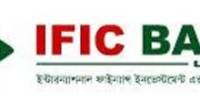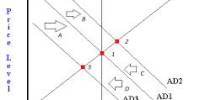Life insurance
Life insurance is a contract between an insurance policy holder and an insurer, where the insurer promises to pay a designated beneficiary a sum of money (the “benefits”) upon the death of the insured person. Depending on the contract, other events such as terminal illness or critical illness may also trigger payment. The policy holder typically pays a premium, either regularly or as a lump sum. Other expenses (such as funeral expenses) are also sometimes included in the benefits.
There is a difference between the insured and the policy owner, although the owner and the insured are often the same person. For example, if Joe buys a policy on his own life, he is both the owner and the insured. But if Jane, his wife, buys a policy on Joe’s life, she is the owner and he is the insured. The policy owner is the guarantor and he will be the person to pay for the policy. The insured is a participant in the contract, but not necessarily a party to it. Also, most companies allow the payer and owner to be different, e. g. a grandparent paying premiums for a policy on a child, owned by a grandchild.
The beneficiary receives policy proceeds upon the insured person’s death. The owner designates the beneficiary, but the beneficiary is not a party to the policy. The owner can change the beneficiary unless the policy has an irrevocable beneficiary designation. If a policy has an irrevocable beneficiary, any beneficiary changes, policy assignments, or cash value borrowing would require the agreement of the original beneficiary.
Death proceeds
Upon the insured’s death, the insurer requires acceptable proof of death before it pays the claim. The normal minimum proof required is a death certificate, and the insurer’s claim form completed, signed (and typically notarized).[citation needed] If the insured’s death is suspicious and the policy amount is large, the insurer may investigate the circumstances surrounding the death before deciding whether it has an obligation to pay the claim.
Payment from the policy may be as a lump sum or as an annuity, which is paid in regular installments for either a specified period or for the beneficiary’s lifetime.
- Age and gender of policy holder
- Medical history/pre-existing conditions (you fill in form, but many companies also use database of Medical Information Bureau)
- Family medical history (For instance, did your parents have a history of heart disease or cancer?)
- Results of medical exam (various tests usually required for higher amounts of insurance; the higher the value the more stringent the criteria). Typical tests include:
Property Insurance
Homeowner insurance protects the owner financially from losses and liability.
Homeowners need insurance because it protects them from costly liability lawsuits, covers them in the event of weather- or fire-related damage to their homes, and pays for losses sustained from theft. When a homeowner owes money on his home, he needs to have insurance to protect both himself and the lender. Homeowners whose homes are completely paid for also carry insurance to protect themselves financially.
Personal Property Coverage
While not required by the lender, personal property coverage is frequently part of a policy. Homeowners need to document their possessions, with receipts, video or photographs, and keep the records in a safe place. Making several paper or DVD copies and distributing them among friends or family who do not live in the house is a good way to safeguard the record of personal property. Most hazard insurance policies will not cover expensive jewelry, art, or musical instruments except as riders to the policy. Before many insurance companies will accept the value of the item, they may require an appraisal of the item by a professional. Some homeowners’ insurance policies do not cover business equipment located in the home; just as with jewelry or art, the insurer may require a rider for items that are used in a home office like copiers, faxes and computers.
- Construction type of dwelling (frame, brick, masonry, EIFS, etc.) and size
- Age of dwelling and condition; age or renovation date of systems within structure such as plumbing, electrical, furnace, roof
- Location of dwelling/property
- Proximity to local fire protection
- Presence of safety features (smoke detectors/fire alarm system, security system, sprinklers, etc.)
Factors of Insurance
1. Utmost Good Faith
The Principle of Utmost Good Faith, is a very basic and first primary principle of insurance. According to this principle, the insurance contract must be signed by both parties (i.e insurer and insured) in an absolute good faith or belief or trust.
2. Insurable Interest
The principle of insurable interest states that the person getting insured must have insurable interest in the object of insurance. A person has an insurable interest when the physical existence of the insured object gives him some gain but its non-existence will give him a loss. In simple words, the insured person must suffer some financial loss by the damage of the insured object.
3. Indemnity
Indemnity means security, protection and compensation given against damage, loss or injury. According to the principle of indemnity, an insurance contract is signed only for getting protection against unpredicted financial losses arising due to future uncertainties. Insurance contract is not made for making profit else its sole purpose is to give compensation in case of any damage or loss.
4. Contribution
Principle of Contribution is a corollary of the principle of indemnity. It applies to all contracts of indemnity, if the insured has taken out more than one policy on the same subject matter. According to this principle, the insured can claim the compensation only to the extent of actual loss either from all insurers or from any one insurer. If one insurer pays full compensation then that insurer can claim proportionate claim from the other insurers.
5. Subrogation
Subrogation means substituting one creditor for another. Principle of Subrogation is an extension and another corollary of the principle of indemnity. It also applies to all contracts of indemnity. According to the principle of subrogation, when the insured is compensated for the losses due to damage to his insured property, then the ownership right of such property shifts to the insurer.
6. Loss Minimizatio
According to the Principle of Loss Minimization, insured must always try his level best to minimize the loss of his insured property, in case of uncertain events like a fire outbreak or blast, etc. The insured must take all possible measures and necessary steps to control and reduce the losses in such a scenario. The insured must not neglect and behave irresponsibly during such events just because the property is insured. Hence it is a responsibility of the insured to protect his insured property and avoid further losses.
7. Causa Proxima (Nearest Cause)
Principle of Causa Proxima (a Latin phrase), or in simple english words, the Principle of Proximate (i.e Nearest) Cause, means when a loss is caused by more than one causes, the proximate or the nearest or the closest cause should be taken into consideration to decide the liability of the insurer.
Definition of Reserves Insurance
A stated amount or percent of liquid assets that an insurer must have on hand that will satisfy all claims from in-force insurance policies and other outstanding liabilities. Reserve limits are established by state regulatory agencies which calculate reserves as a percent of the total present value of in-force insurance less the present value of future premiums to be received plus interest.
Definition of Premium Insurance
An insurance premium is the amount of money charged by a company for active coverage. The sum a person pays in premiums, also referred to as the rate, is determined by several factors, including age, health, and the area a person lives in. People pay these rates annually or in smaller payments over the course of the year, and the amount can change over time. When insurance premiums are not paid, the policy is typically considered void and companies will not honor claims against it.
Reinsurance
Reinsurance is insurance that is purchased by an insurance company (the “ceding company” or “cedant” or “cedent” under the arrangement) from one or more other insurance companies (the “reinsurer”) as a means of risk management, sometimes in practice including tax mitigation and other reasons described below. The ceding company and the reinsurer enter into a reinsurance agreement which details the conditions upon which the reinsurer would pay a share of the claims incurred by the ceding company. The reinsurer is paid a “reinsurance premium” by the ceding company, which issues insurance policies to its own policyholders.
The reinsurer may be either a specialist reinsurance company, which only undertakes reinsurance business, or another insurance company.
Evaluation
Evaluation is a systematic determination of a subject’s merit, worth and significance, using criteria governed by a set of standards. It can assist an organization to assess any aim, realizable concept or proposal, or any alternative, to help in decision-making; or to ascertain the degree of achievement or value in regard to the aim and objectives and results of any such action that has been completed.
Bangladesh Insurance Academy
Bangladesh Insurance Academy (BIA) established in 1973 in Dhaka by the government of Bangladesh to impart training to Insurance professionals and others taking up insurance as a career. It is an autonomous body attached to the ministry of commerce. The management of the academy is vested in a board of governors formed by the government. The academy conducts various training programmers for personnel in the insurance industry, arranges seminars, symposiums and conferences on issues relating to the insurance business. The academy started functioning in early 1974 with 12 employees.
In the same year, the academy got affiliated with the Chartered Institute of Insurance in London and started conducting coaching classes for the institute’s ACII programmed at its campus in Dhaka. On behalf of the Chartered Institute of Insurance, the academy conducted examinations for Bangladeshi candidates for ACII certificate. Between 1974 and 1977, the academy offered a total of 17 training courses, of which 8 were on life insurance, while the rest were on general insurance with 437 and 232 participants respectively from Jiban Bima Corporation and Sadharan Bima Corporation. These were the only two state-owned insurance corporations in Bangladesh until 1984, when the government of Bangladesh promulgated the Insurance (Amendment) Ordinance 1984 and Insurance Corporations (Amendment) Ordinance 1984 and allowed private insurance companies to operate with the primary objective of improving the services of insurance and developing a competitive spirit for the benefit of the insuring community. Participants in the academy’s training courses were mainly from those corporations. A few were from Bangladesh shipping corporation and some universities and they came to study for the ACII programmer run by the Chartered Institute of Insurance of London.
















